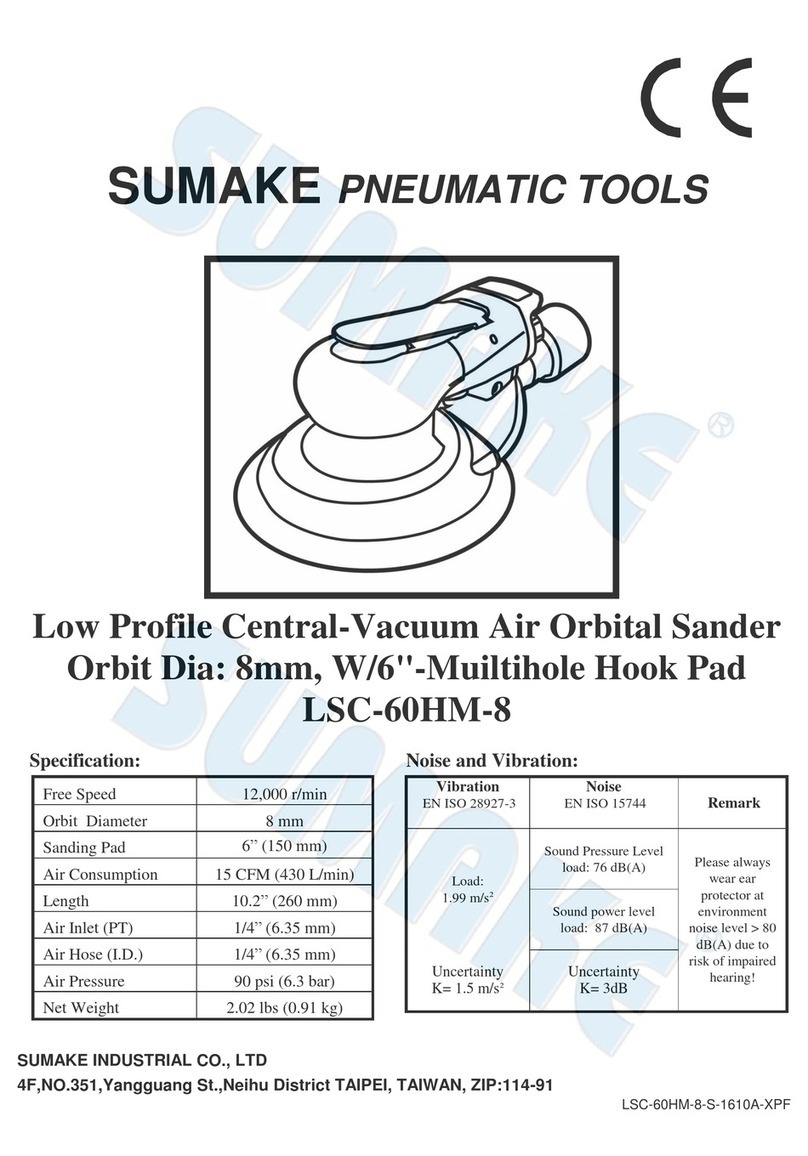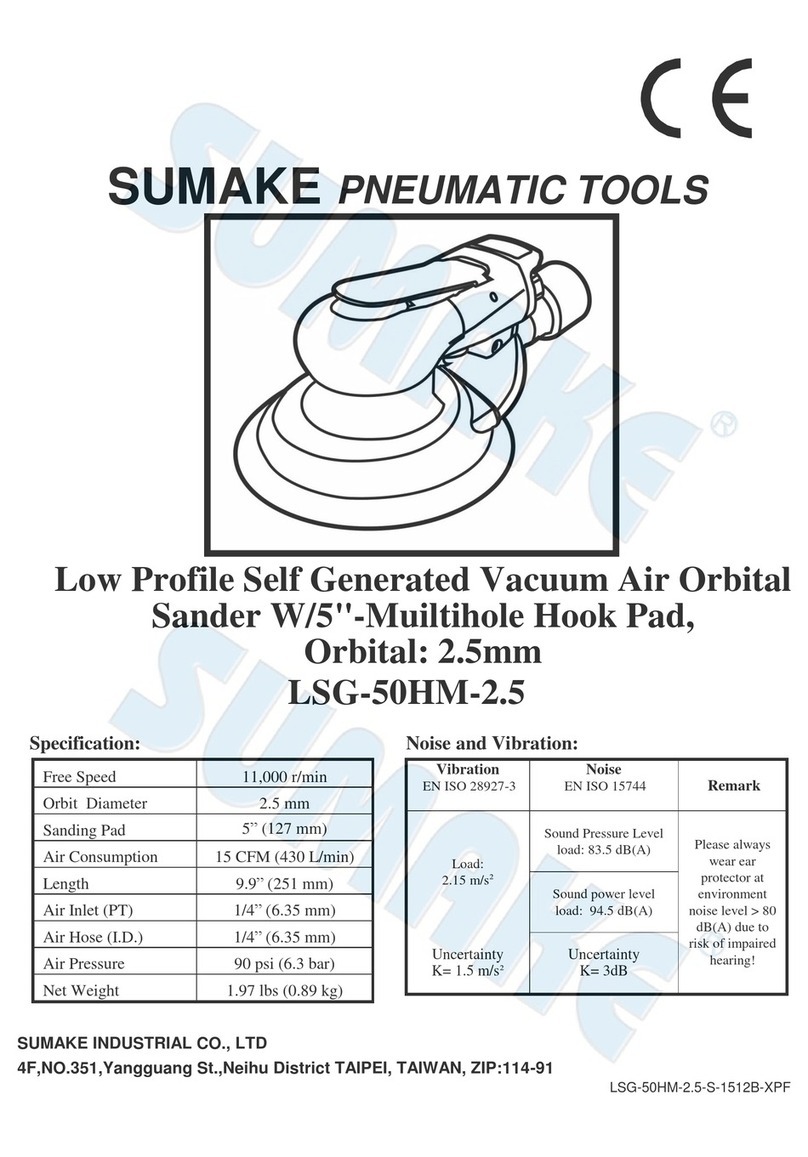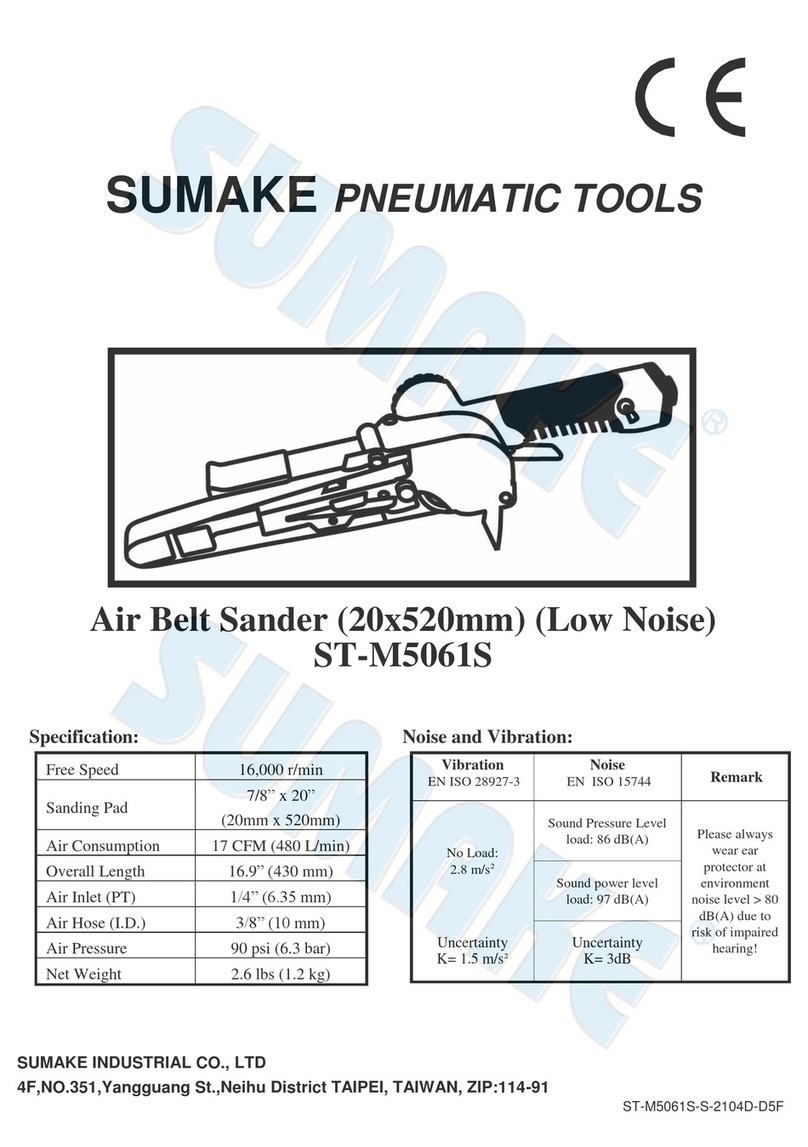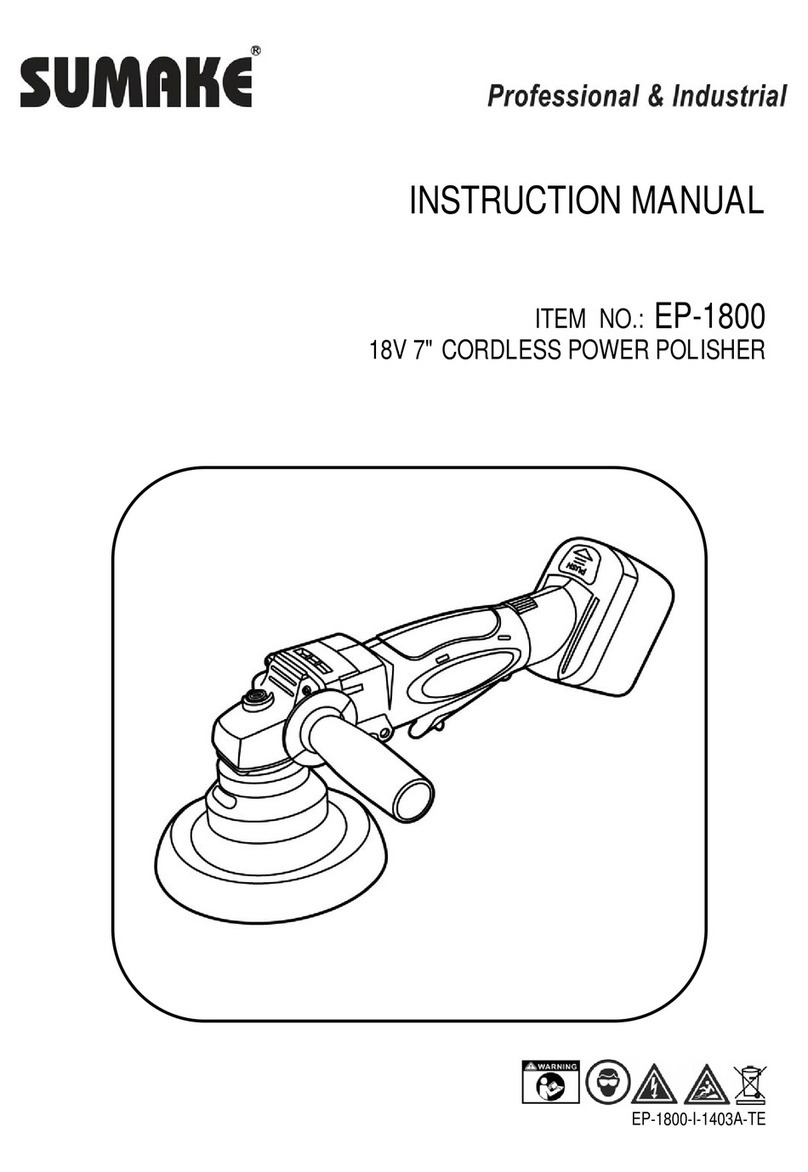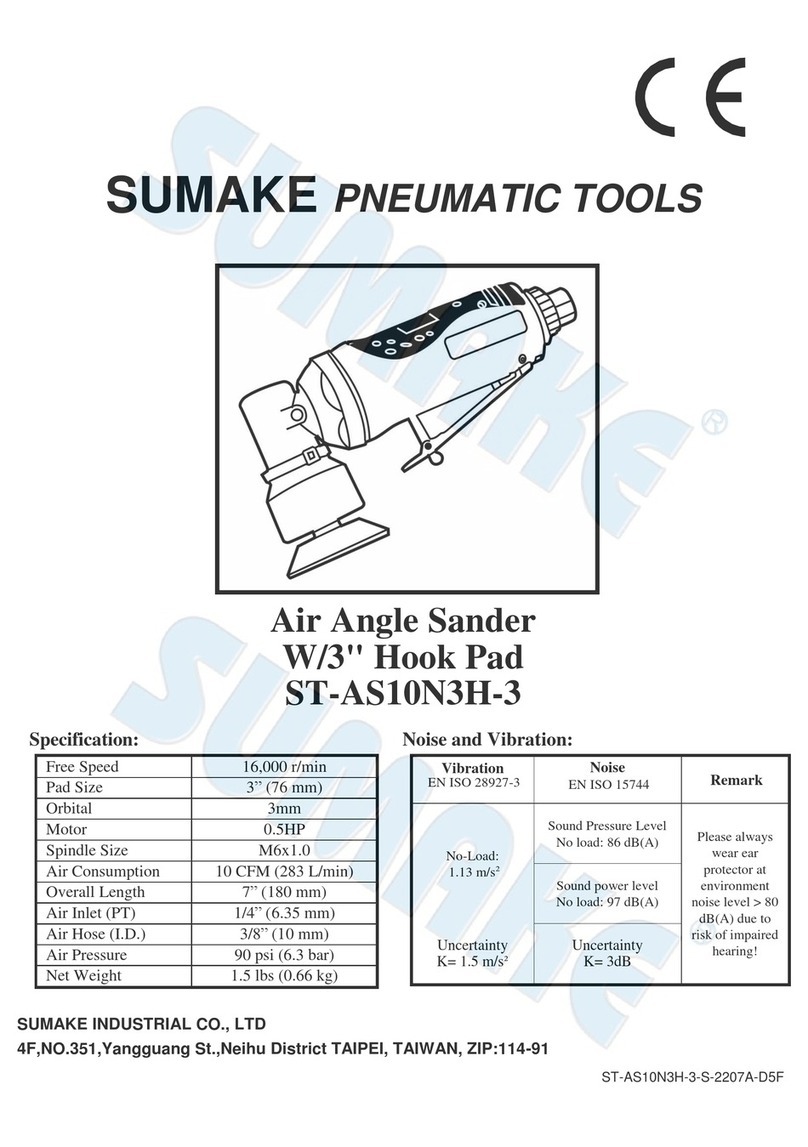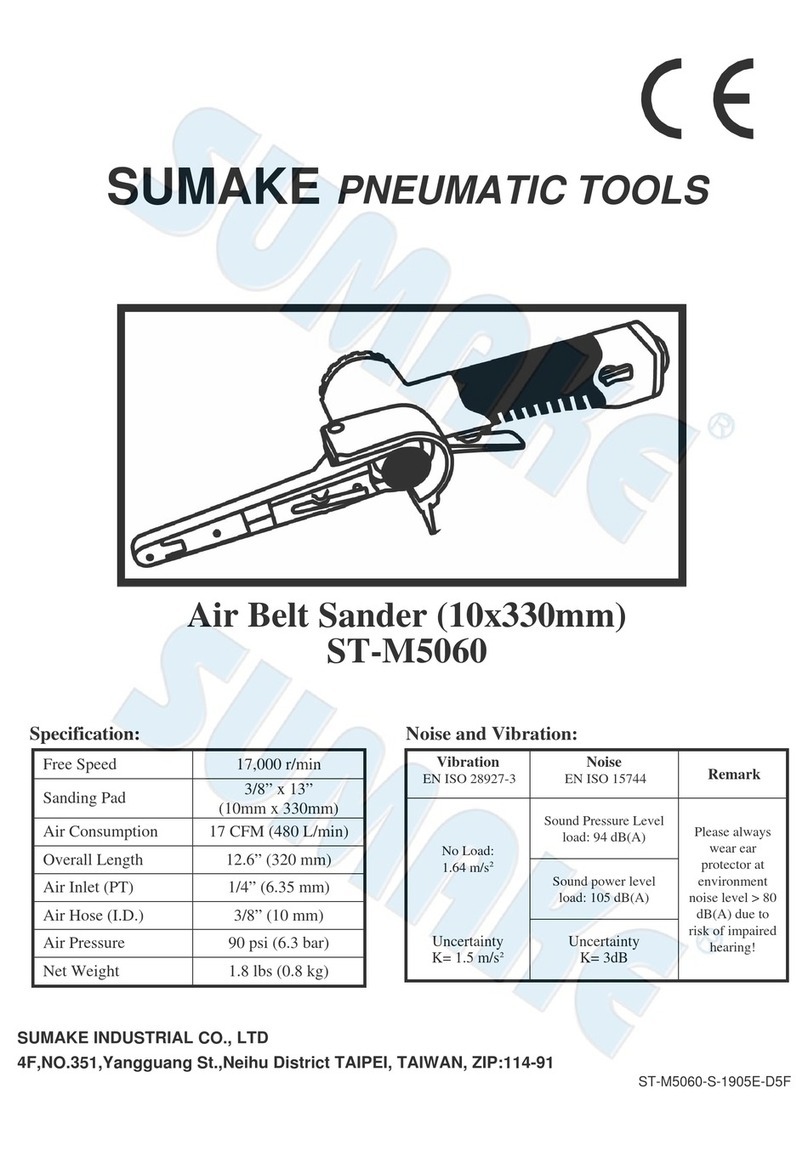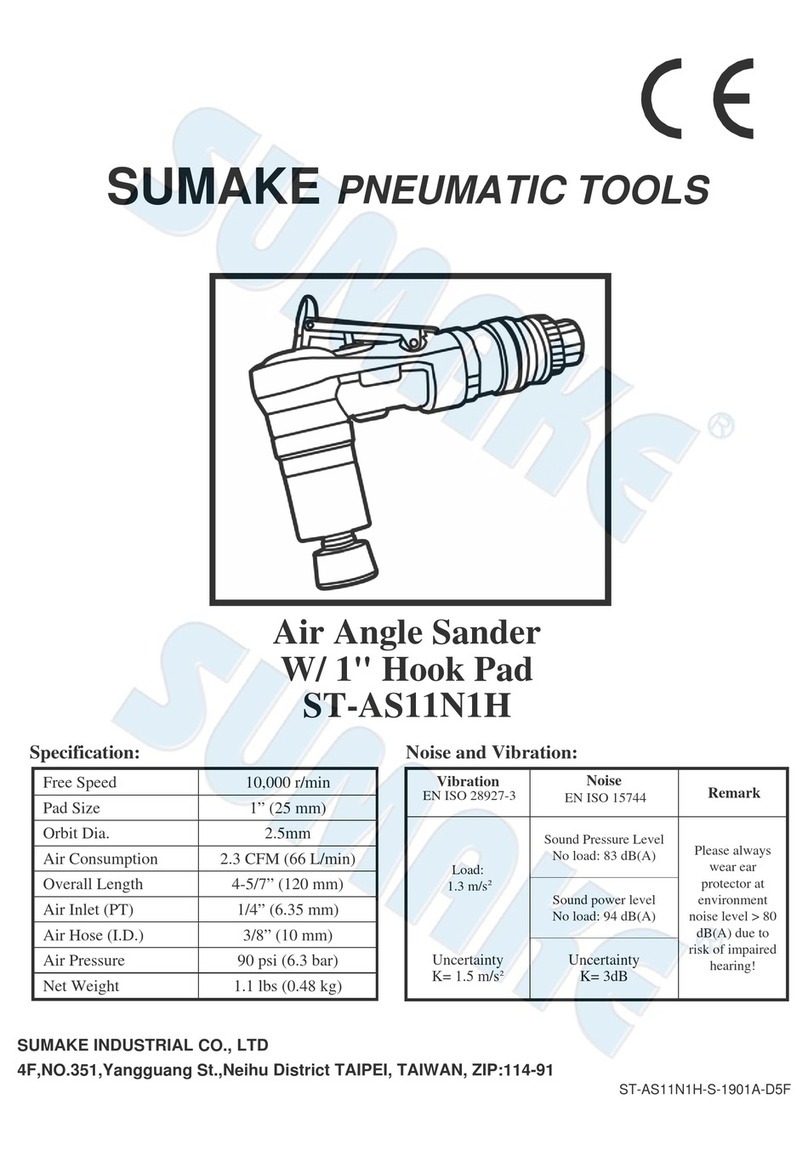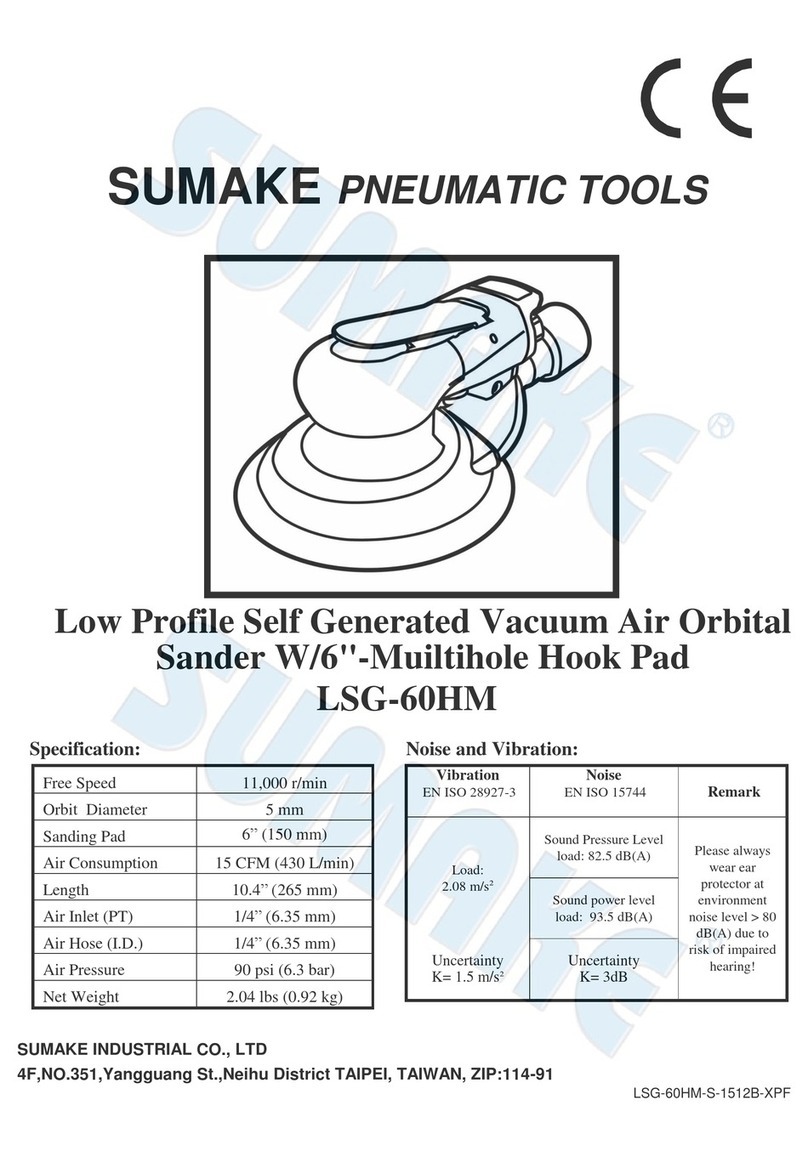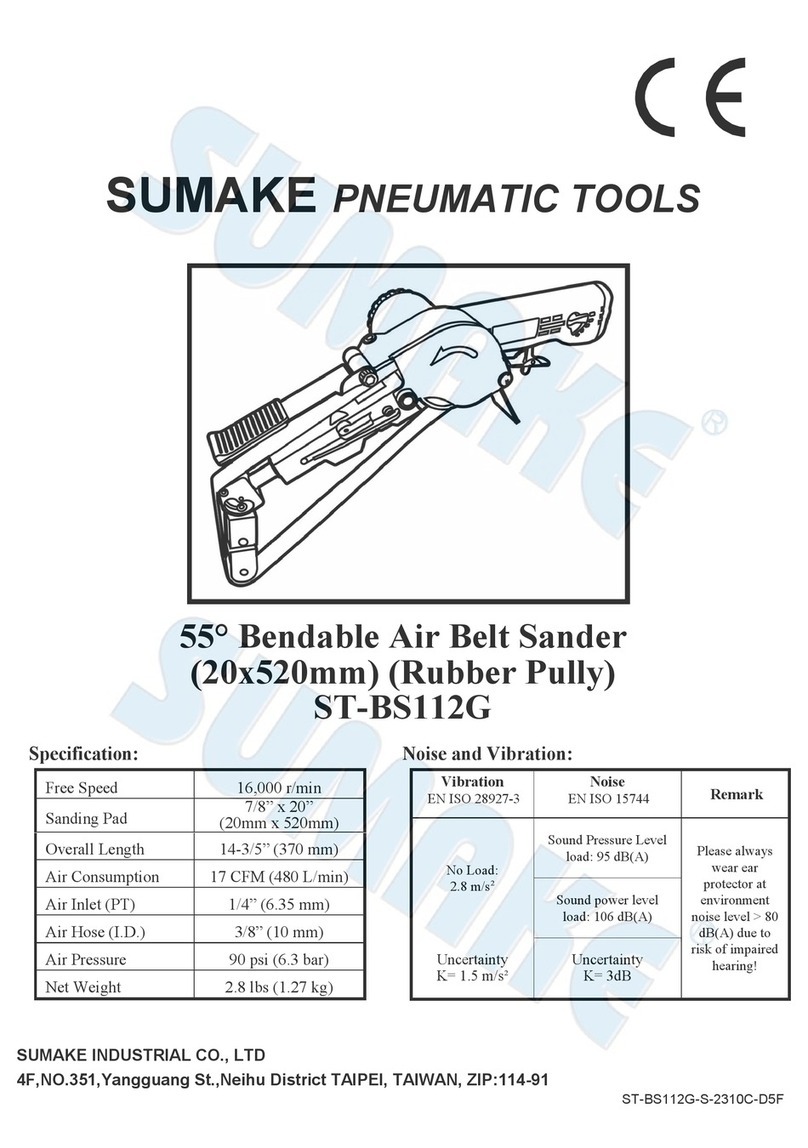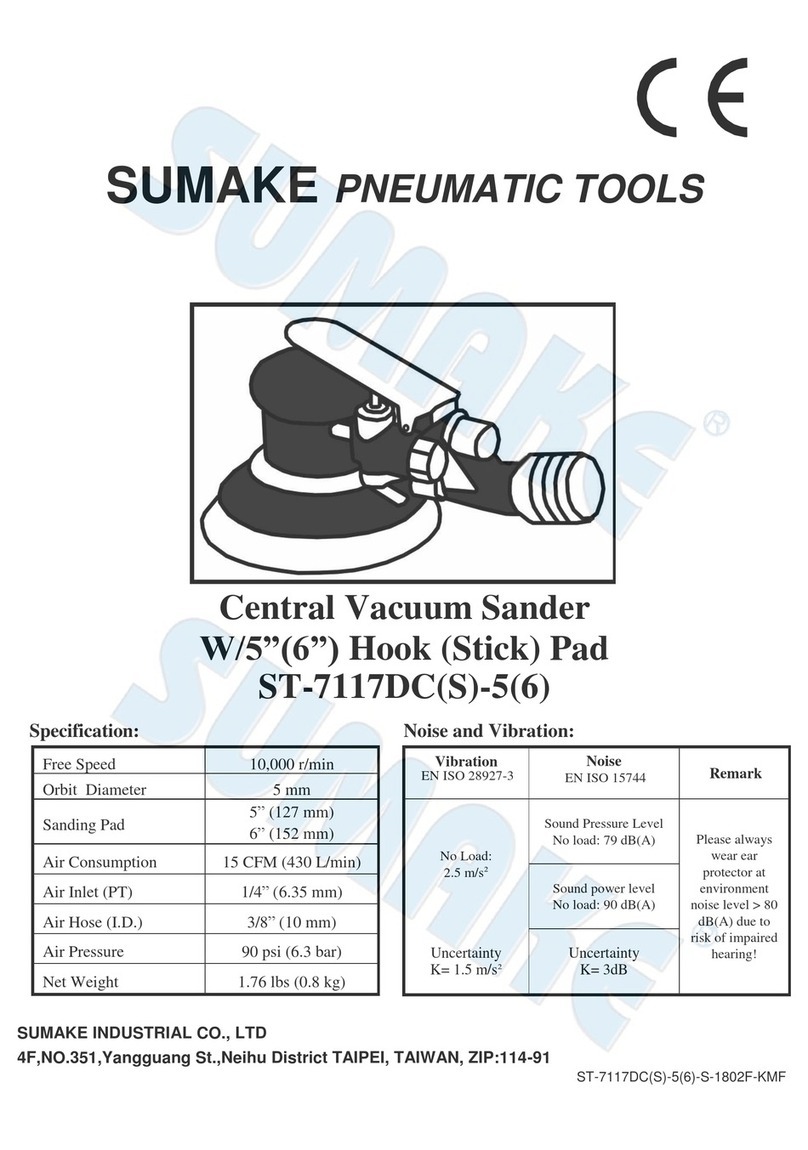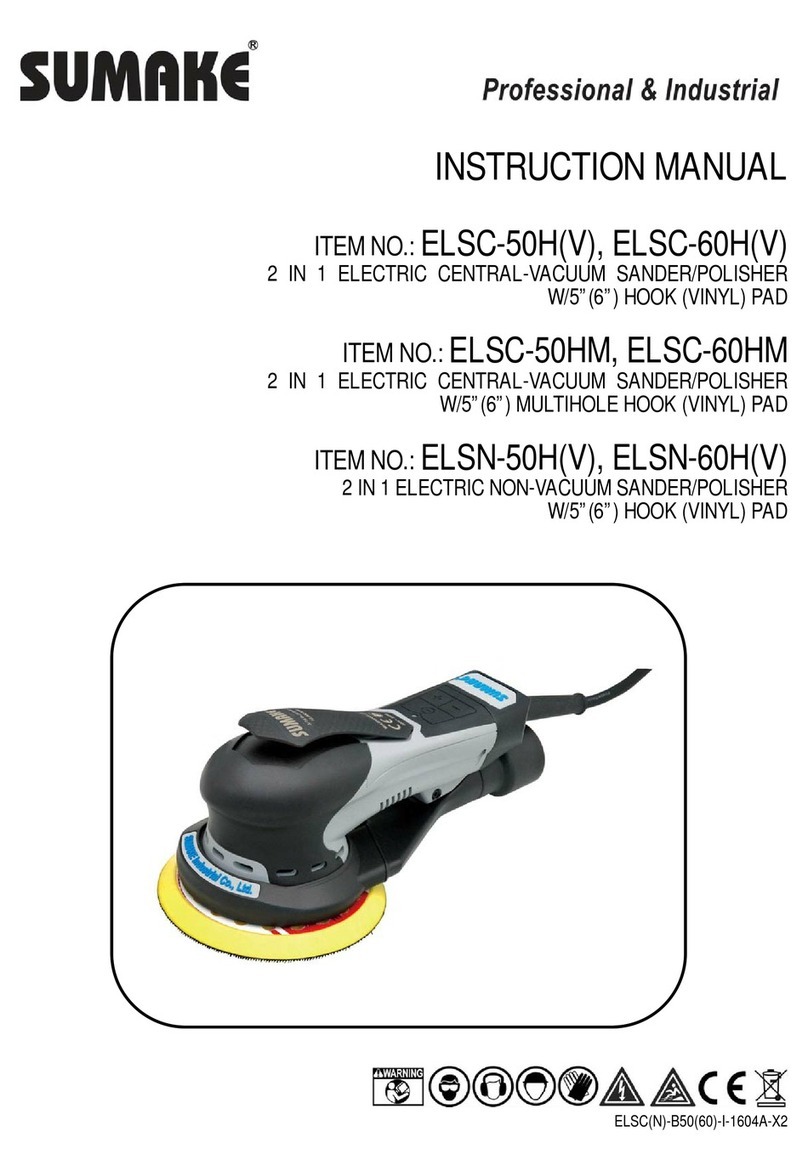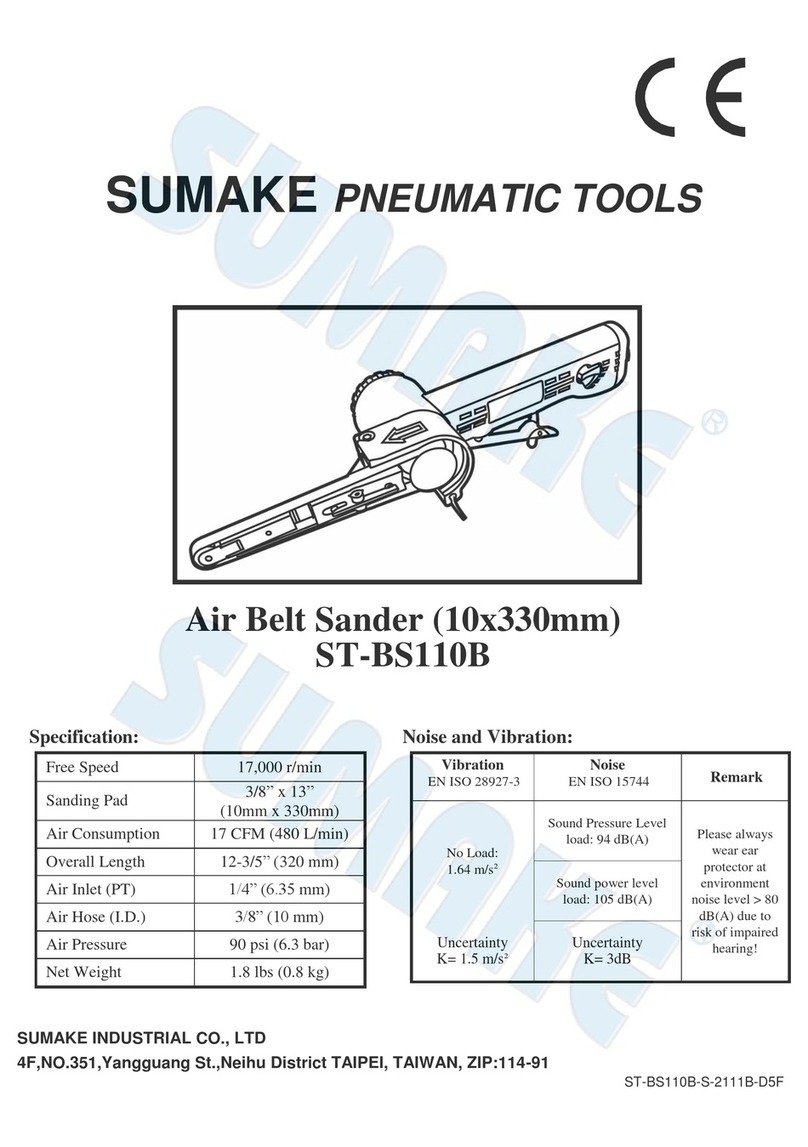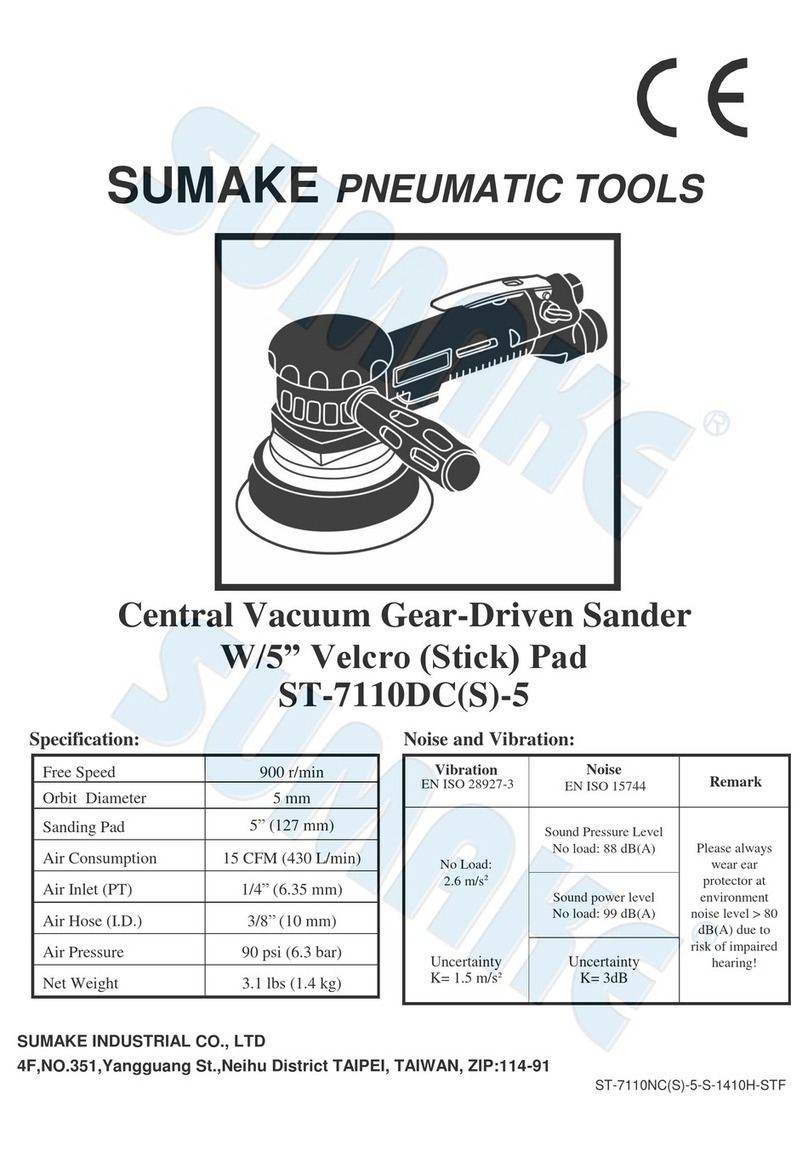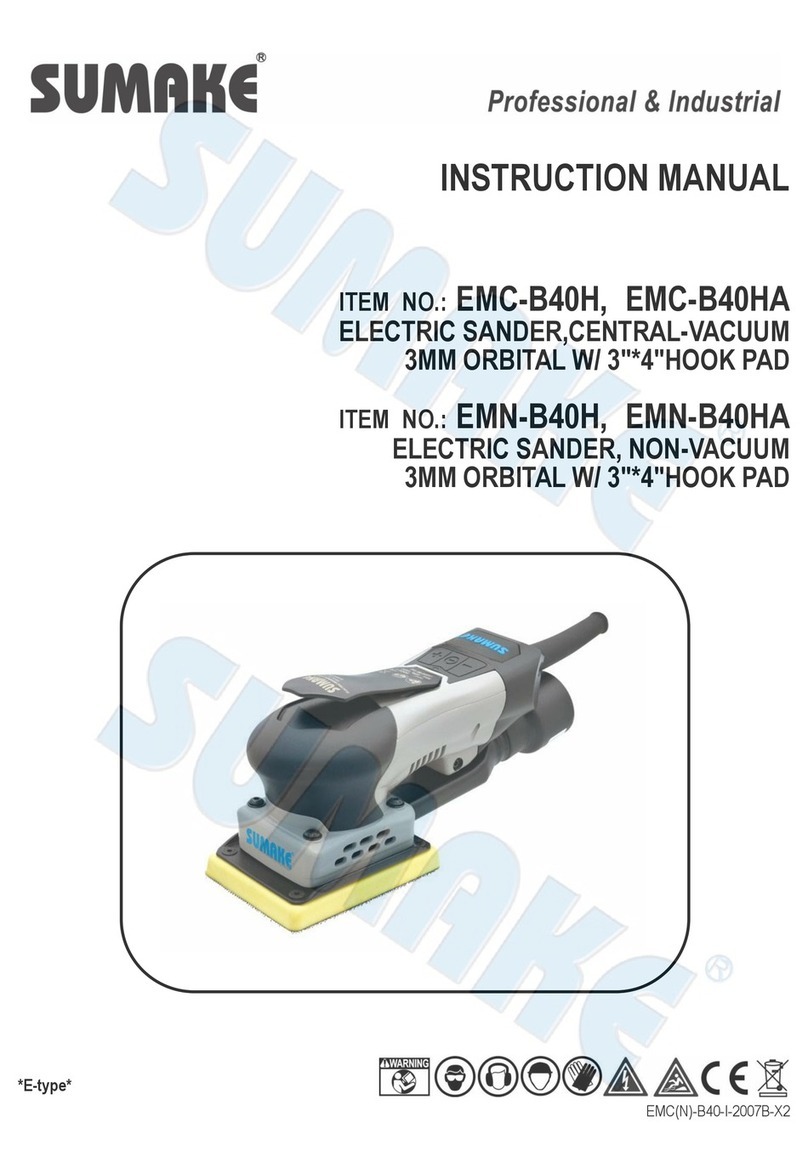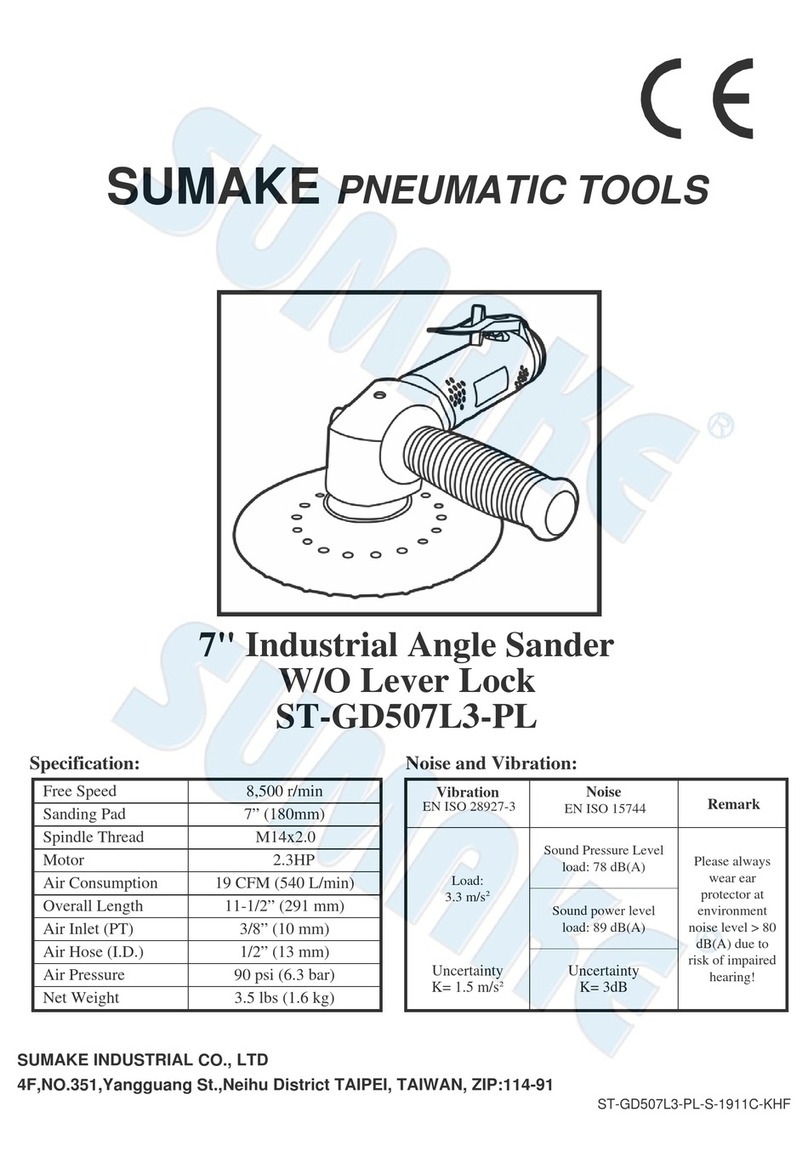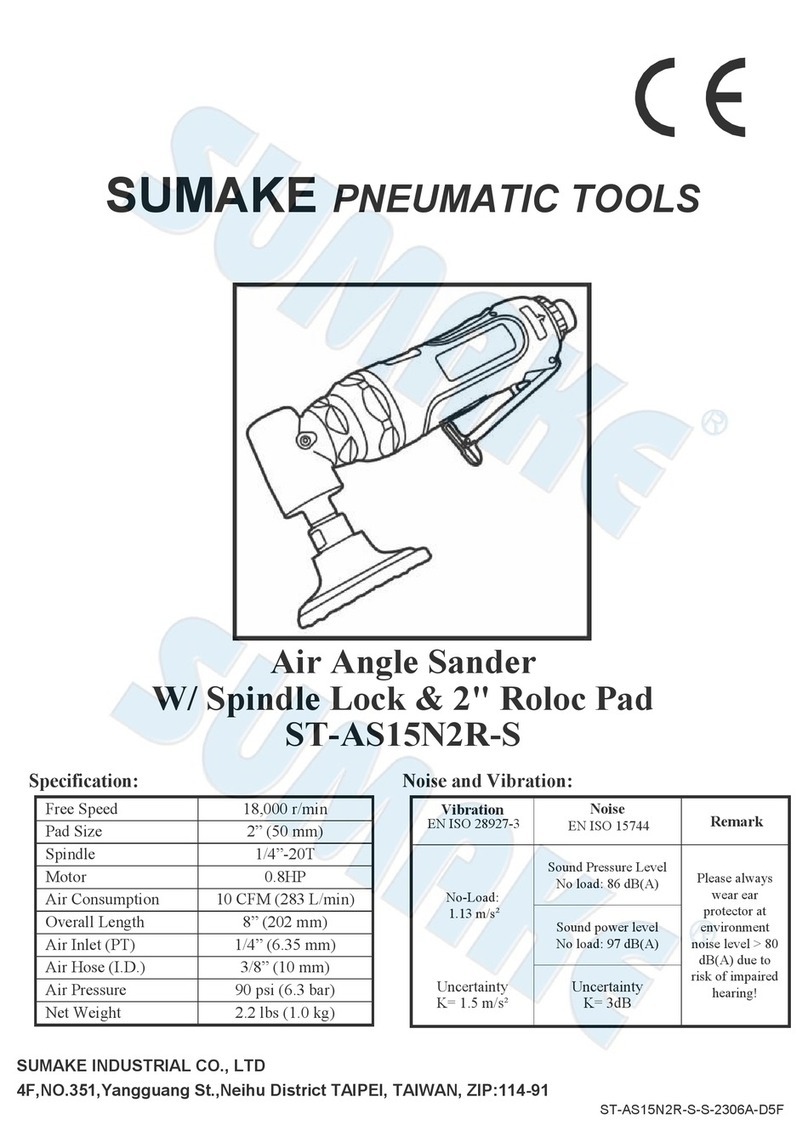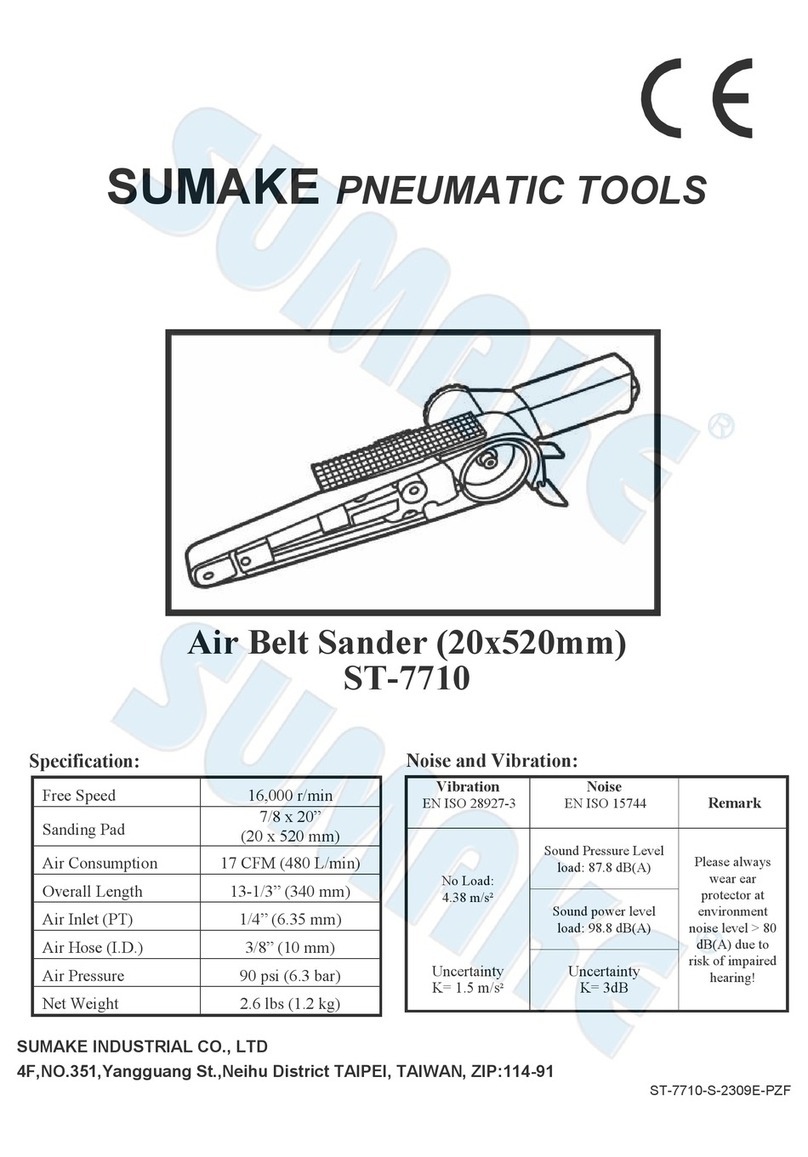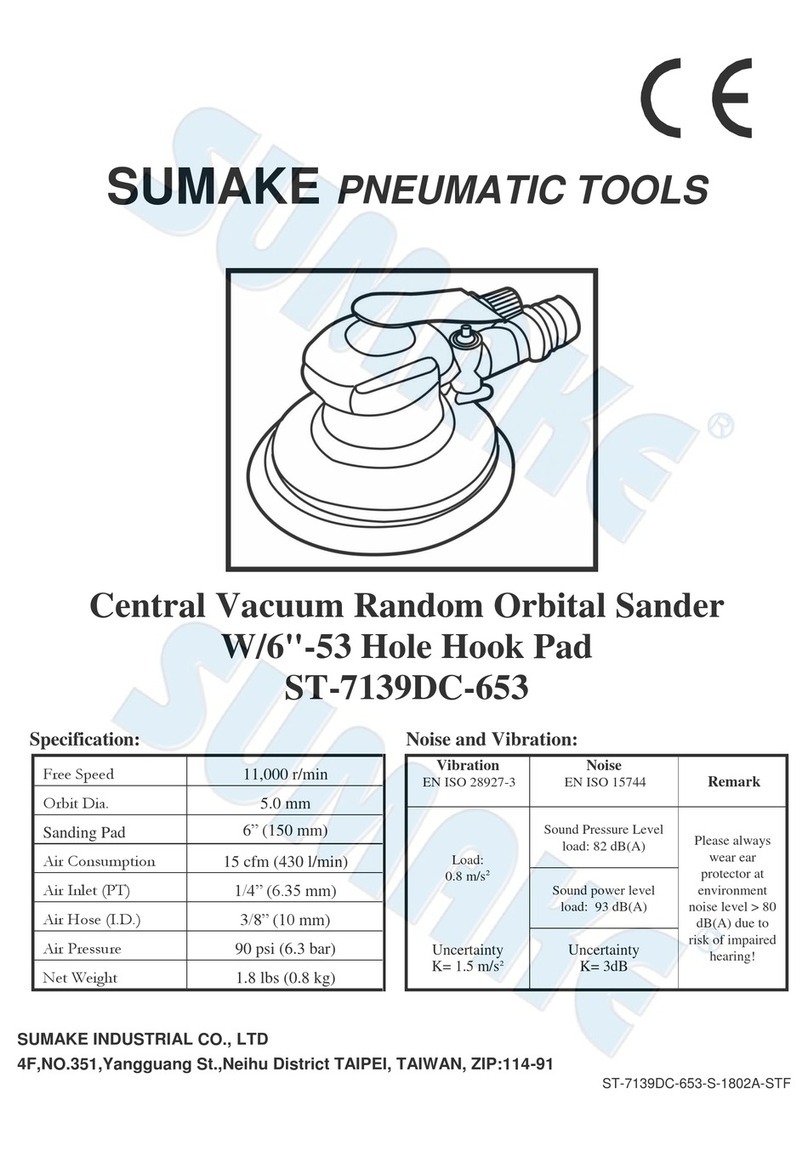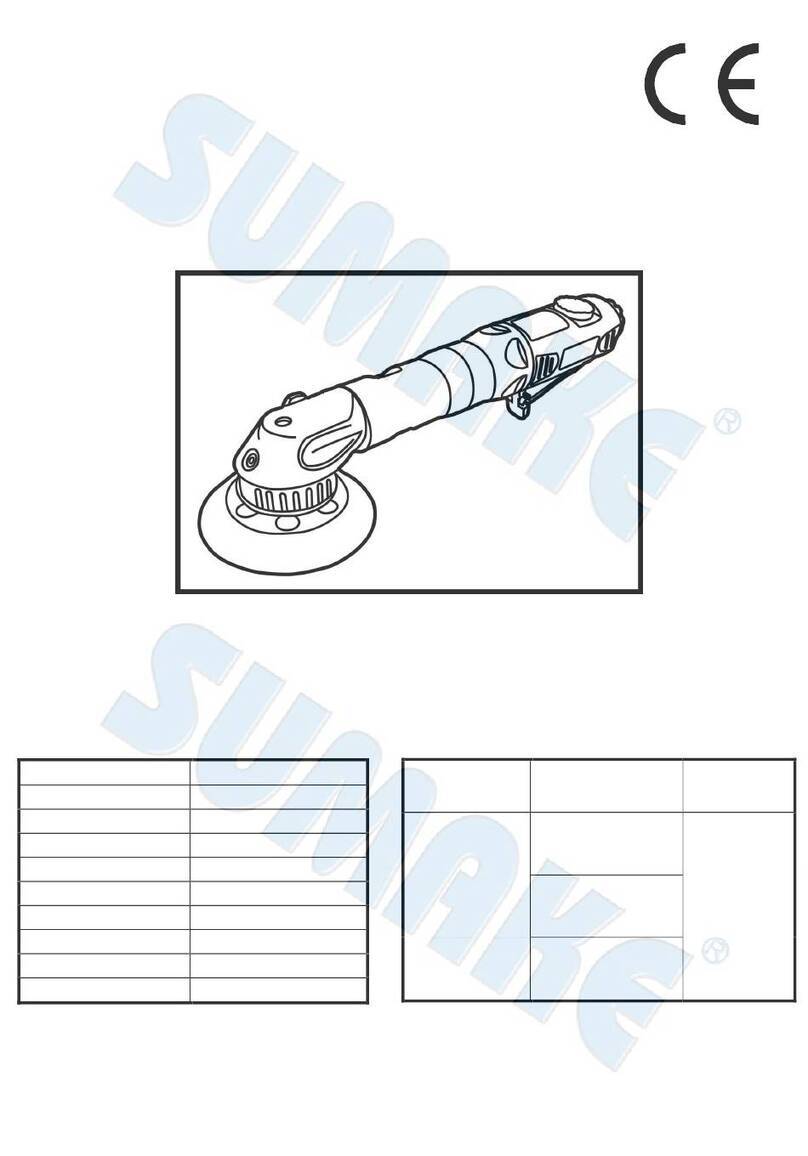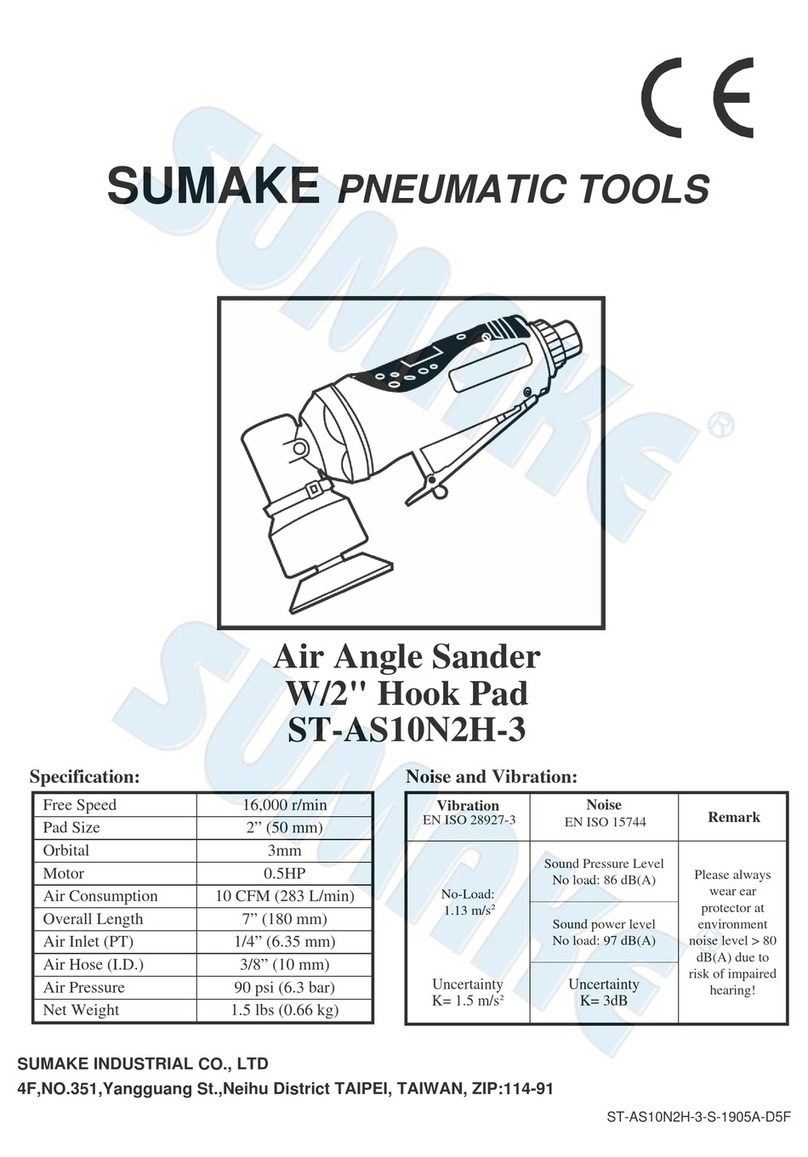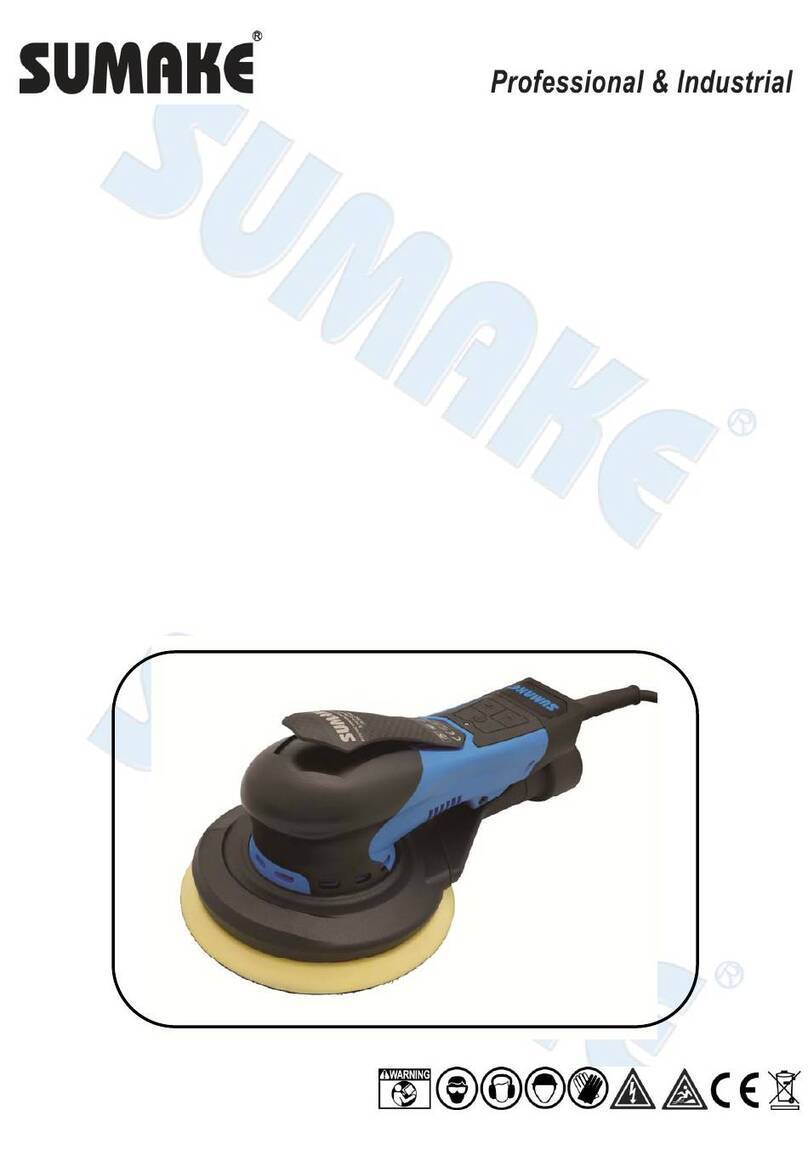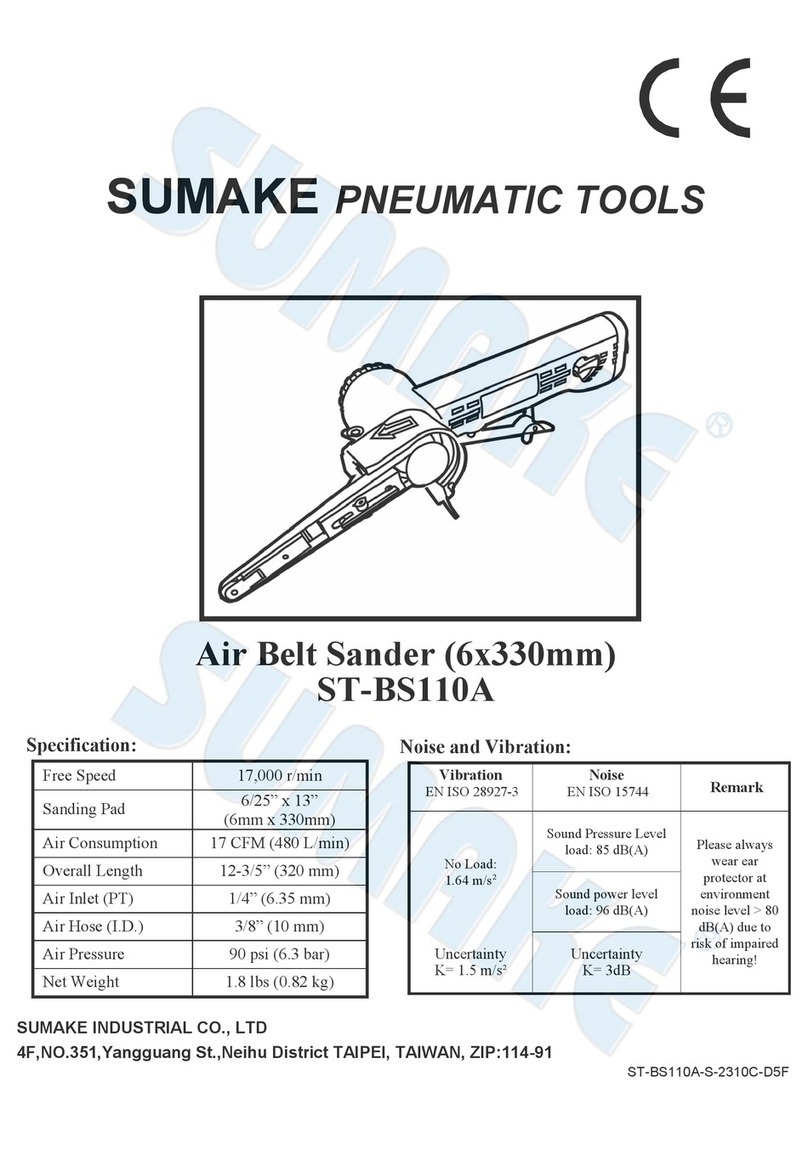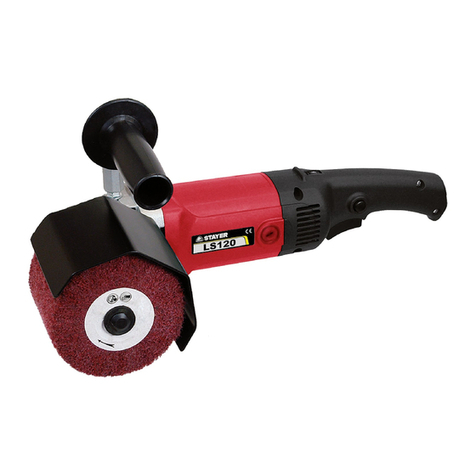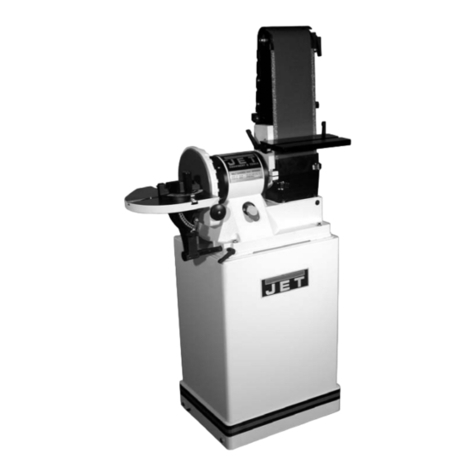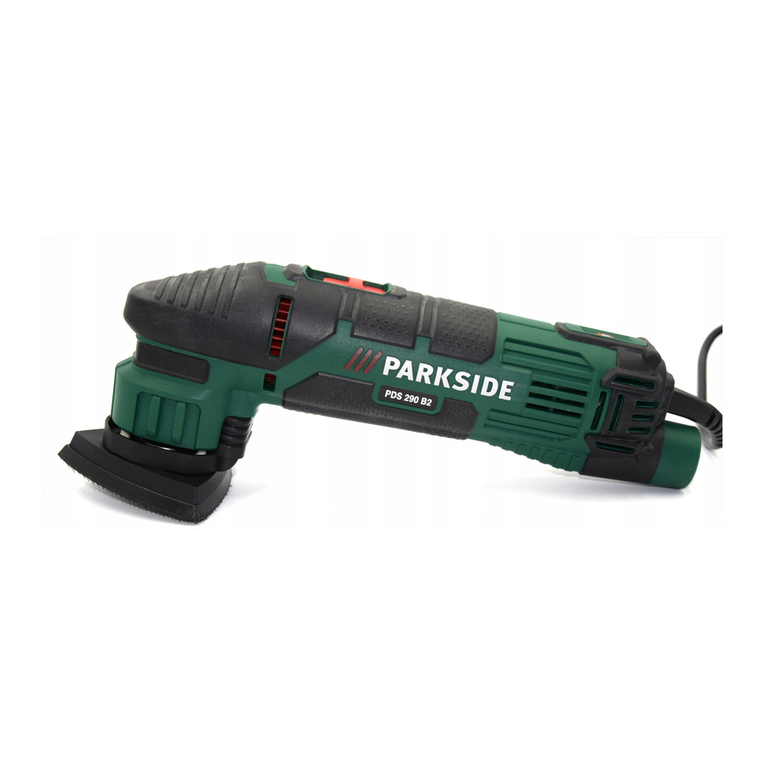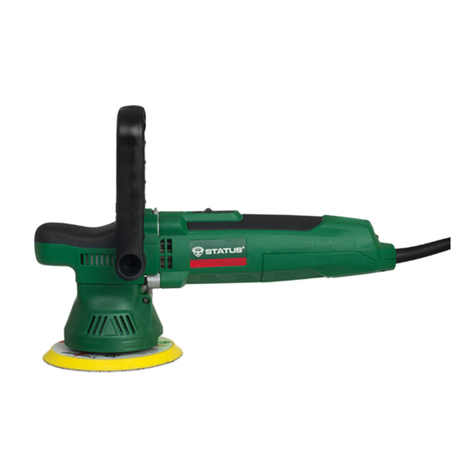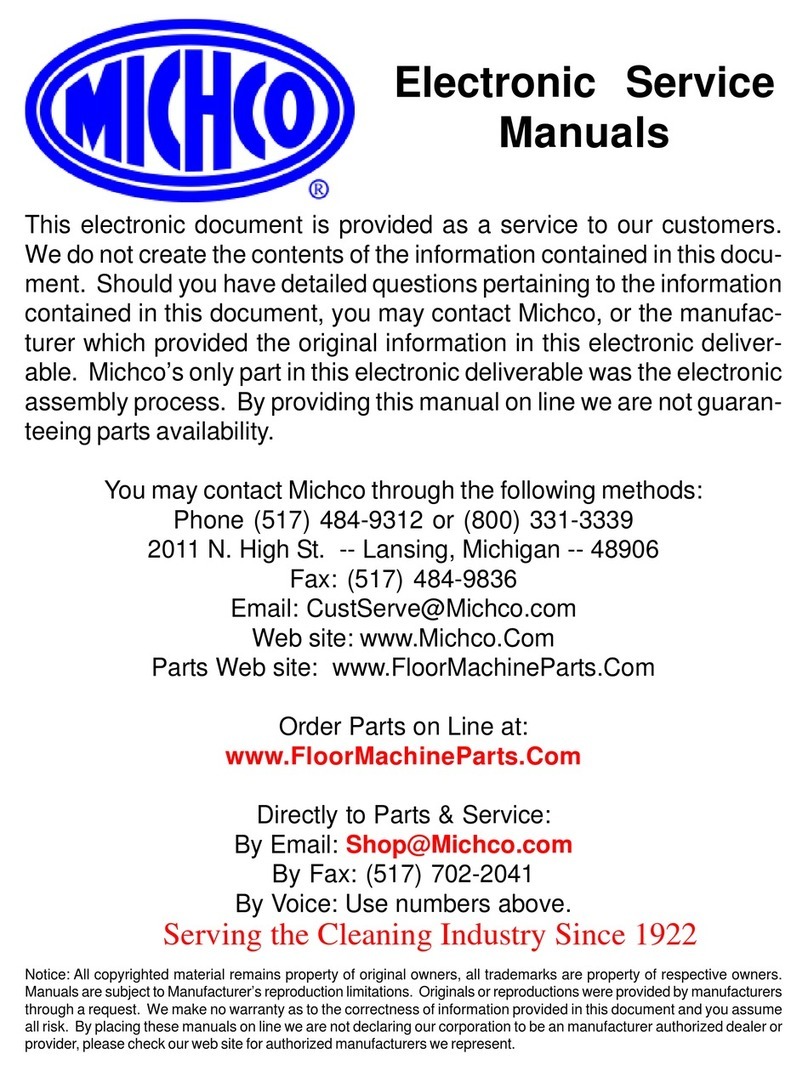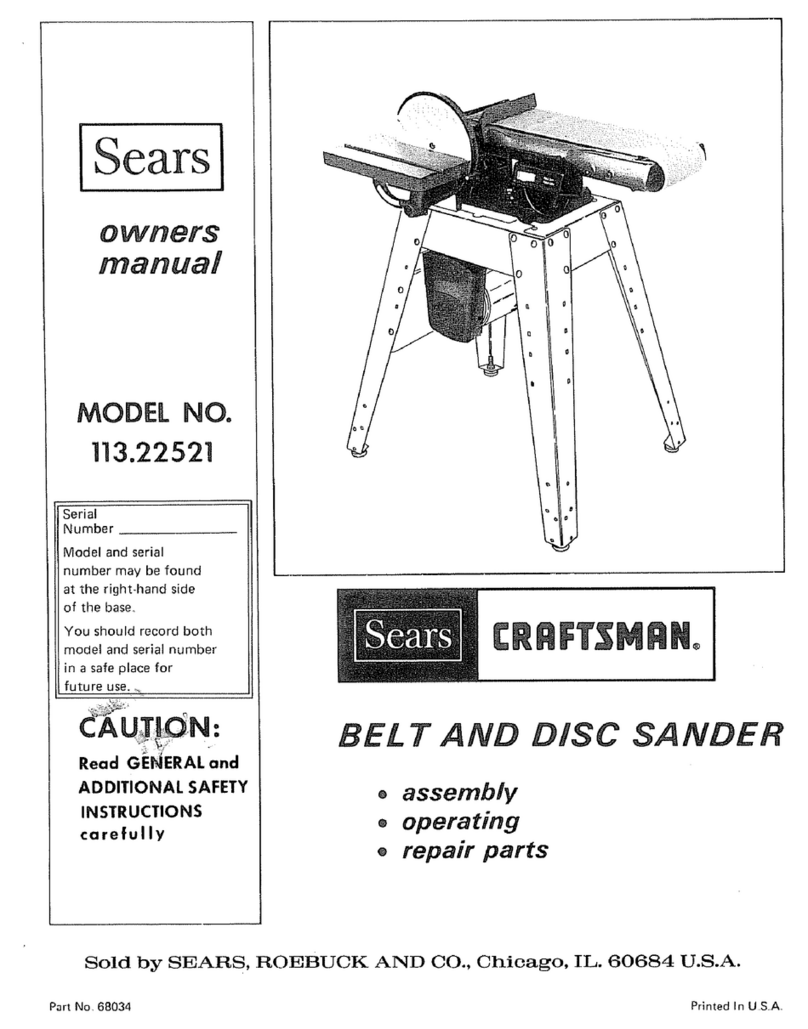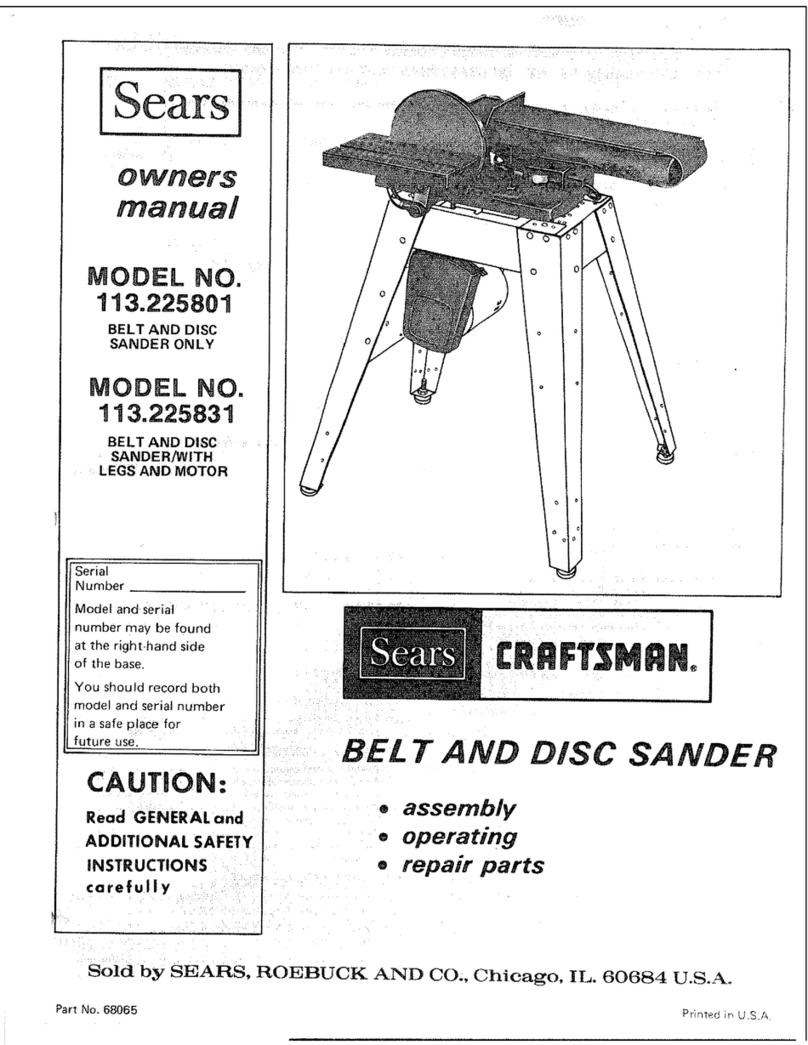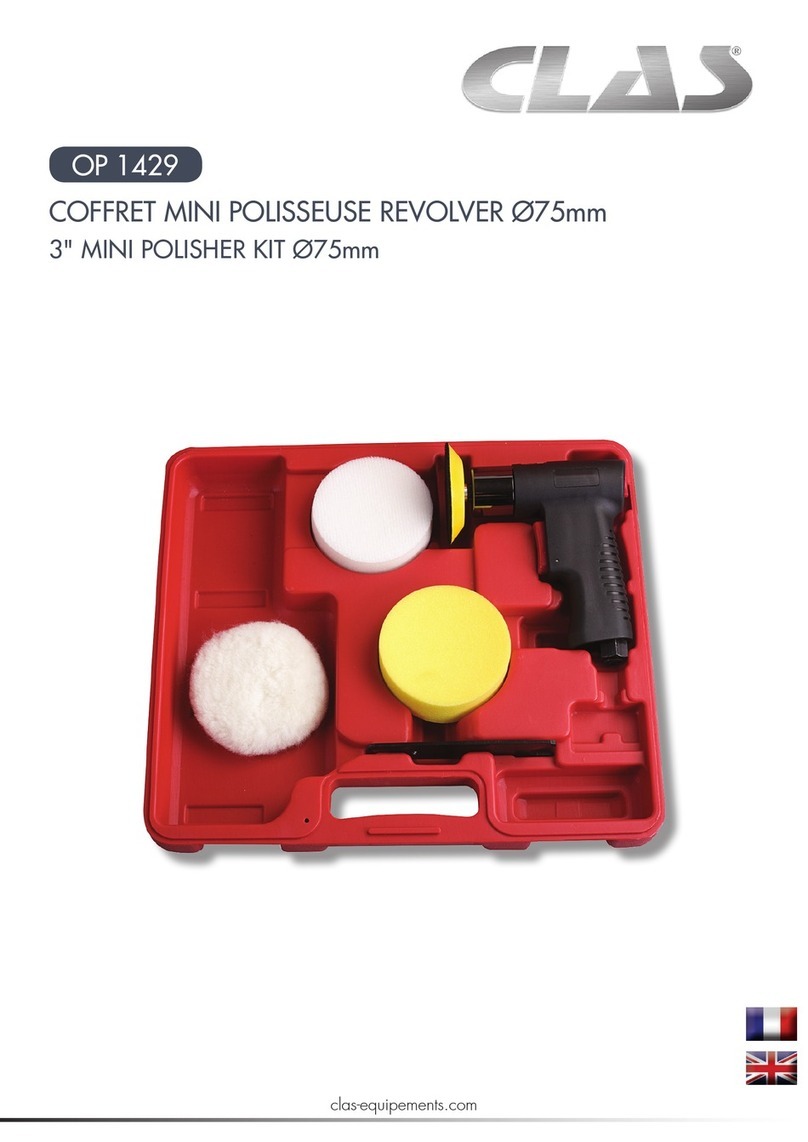
Work Stations
The tool is intended to be operated as a hand held tool. It is always recommended that the tool be used when standing on a solid floor.
It can be in any position but before any such use, the operator must be in a secure position having a firm grip and footing and be aware
that the sander can develop a torque reaction. See the section "Operating Instructions".
Putting the Tool into Service
Use a clean lubricated air supply that will give a measured air pressure at the tool of 90 PSI (6.3 bar) when the tool is running with the
lever fully depressed. It is recommended to use an approved 3/8 in. (10 mm) x 25 ft (8 m) maximum length airline. It is recommended
that the tool be connected to the air supply as shown in Figure 1.
Do not connect the tool to the airline system without incorporating an easy to reach and operate air shut off valve. The air supply
should be lubricated. It is strongly recommended that an air filter, regulator and lubricator (FRL) be used as shown in Figure 1 as this
will supply clean, lubricated air at the correct pressure to the tool. Details of such equipment can be obtained from your supplier. If such
equipment is not used then the tool should be manually lubricated
To manually lubricate the tool, disconnect the airline and put 2 to 3 drops of suitable pneumatic motor lubricating oil such as Fuji Kosan
FK-20, Mobil ALMO 525 or Shell TORCULA® 32 into the hose end (inlet) of the machine. Reconnect tool to the air supply and run tool
slowly for a few seconds to allow air to circulate the oil. If the tool is used frequently, lubricate it on a daily basis or lubricate it if the tool
starts to slow or lose power.
It is recommended that the air pressure at the tool be 90 PSI (6.3 Bar) while the tool is running so the maximum r/min is not exceeded.
The tool can be run at lower pressures but should never be run higher than 90 PSI (6.3 Bar). If run at lower pressure the performance
of the tool is reduced.
Operating Instructions
1. Read all instructions before using this tool. All operators must be fully trained in its use and aware of these safety rules. All
service and repair must be carried out by trained personnel.
2. Make sure the tool is disconnected from the air supply. Select a suitable abrasive and secure it to the back-up pad. Be careful
and center the abrasive on the back-up pad.
3. Always wear required safety equipment when using this tool.
4. When sanding always place the tool on the work then start the tool. Always remove the tool from the work before stopping. This
will prevent gouging of the work due to excess speed of the abrasive.
5. Always remove the air supply to the sander before fitting, adjusting or removing the abrasive or back-up pad.
6. Always adopt a firm footing and/or position and be aware of torque reaction developed by the sander.
7. Use only correct spare parts.
8. Always ensure that the material to be sanded is firmly fixed to prevent its movement.
9. Check hose and fittings regularly for wear. Do not carry the
tool by its hose; always be careful to prevent the tool from
being started when carrying the tool with the air supply
connected.
10. Dust can be highly combustible. Vacuum dust collection
bag should be cleaned or replaced daily. Cleaning or
replacing of bag also assures optimum performance.
11. Do not exceed maximum recommended air pressure. Use
safety equipment as recommended.
12. The tool is not electrically insulated. Do not use where
there is a possibility of coming into contact with live
electricity, gas pipes, water pipes, etc. Check the area of
operation before operation.
13. Take care to avoid entanglement with the moving parts of
the tool with clothing, ties, hair, cleaning rags, etc. If
entangled, it will cause the body to be pulled towards the
work and moving parts of the machine and can be very
dangerous.
14. Keep hands clear of the spinning pad during use.
15. If the tool appears to malfunction, remove from use im-
mediately and arrange for service and repair.
16. Do not allow the tool to free speed without taking precau-
tions to protect any persons or objects from the loss of the abrasive or pad.

